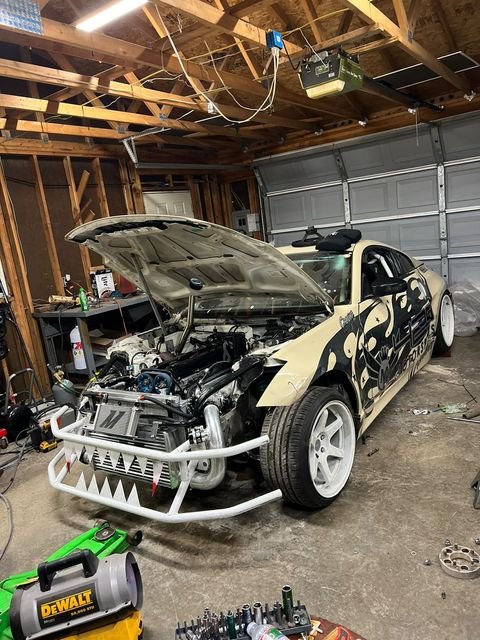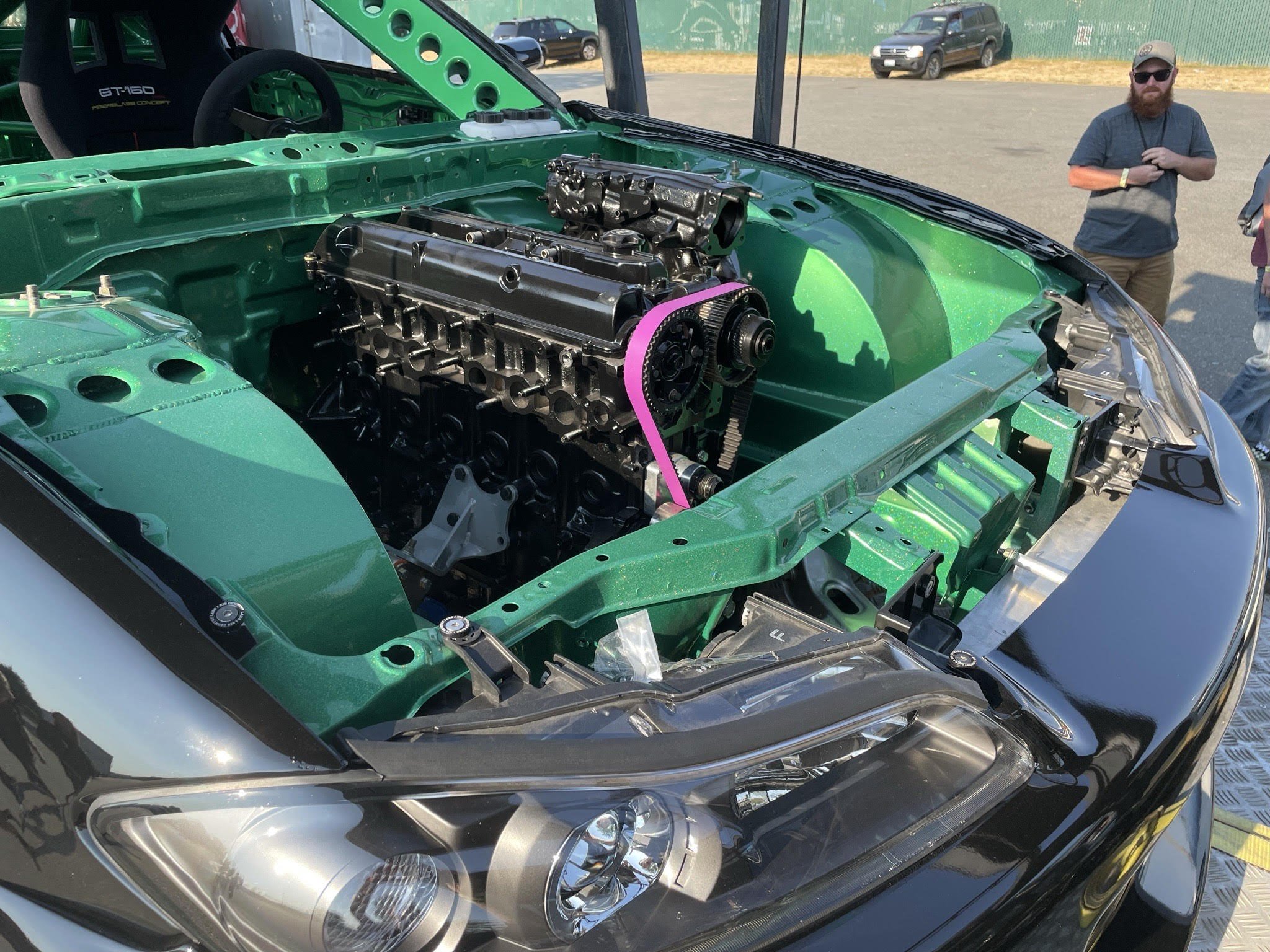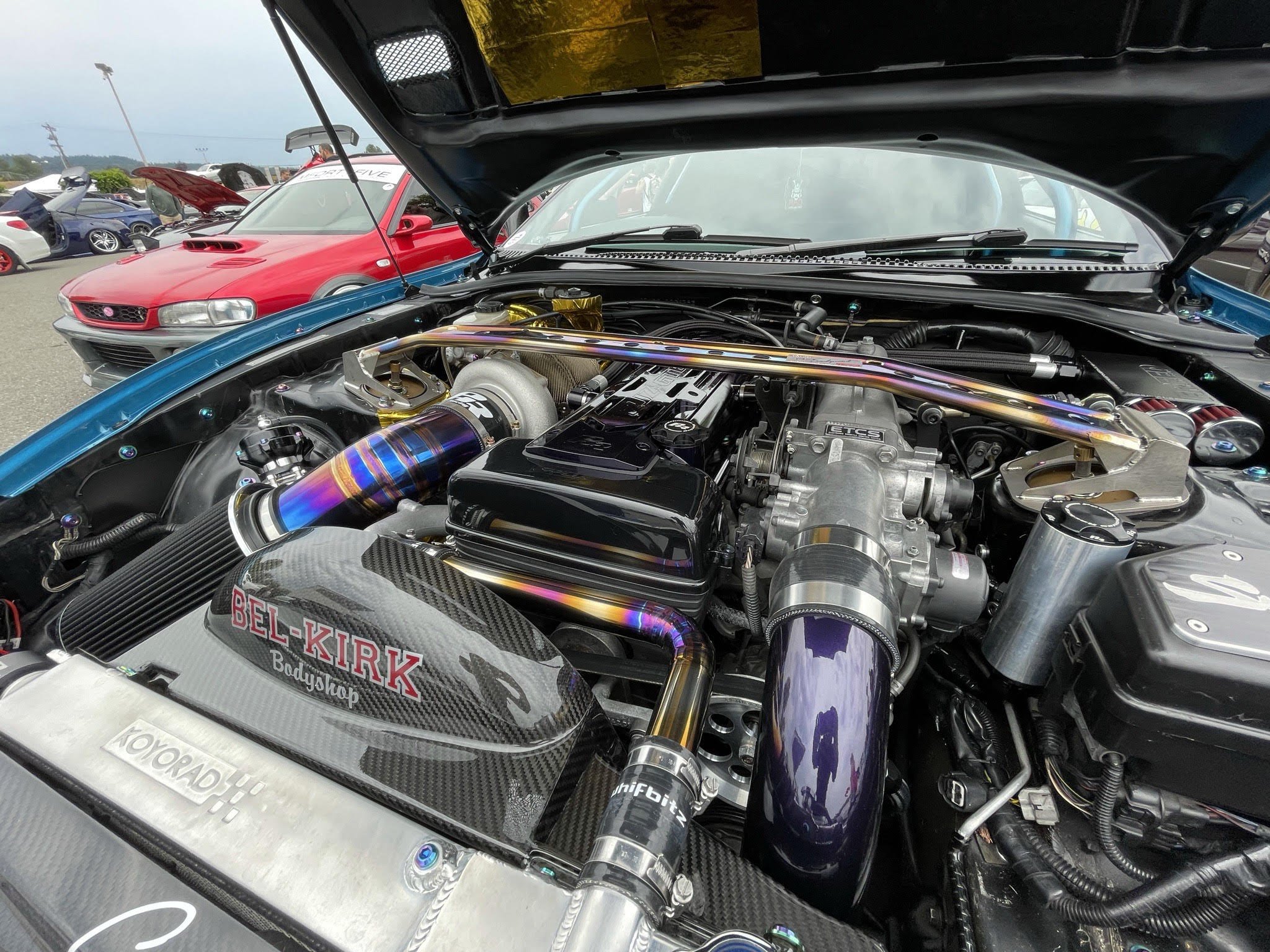BULLETPROOF DRIFT BEAST
The Story Of The 2JZ’s Popularity In Drifting.
The Little [Drifting] Engine That Could.
The story of the bulletproof drift beast (aka 2JZ motor), starts with the 1JZ. This is an earlier inline, six-cylinder engine model made by Toyota with a great deal of influence from Yamaha.
The development of the 1JZ motor started in the early 1990s, when most Japanese car manufacturers were engaged in a fierce marketing competition to build affordable, fun sports cars. According to engine-specs.net, the 1JZ engine could run 276 horsepower (HP) at 6,200 rotations per minute (RPM), straight out of the factory,
The 2JZ engine was released shortly thereafter, and unlike the development of the 1JZ - which was partially sourced out - the 2JZ was designed and birthed exclusively by Toyota.
Though there are many similarities between the two engines, their main difference is in the displacement. The 2JZ motor was manufactured with a 3.0 liter displacement; an upgrade from the 2.5 liter displacement found in a stock 1JZ engine.
In the motorsport world, both of these engines are revered. In some circles, they even have legendary status, primarily because of the durability of the stock components (i.e. pistons, connecting rods, crankshaft, etc.)
These parts have been put to the test for years, and it’s been proven time and again, they will withstand twice as much HP than many other stock motors.
As a result, these two engines can also achieve larger power numbers with only a few modifications.
Photo courtesy of Drift Enthusiast Magazine
The cast-iron block of the 1JZ and 2JZ is one of the main reasons these engines are so notoriously strong and reliable.
In writer Chris Perkins’ February 2019 roadandtrack.com article, entitled Why the MkIV Toyota Supra’s 2JZ Engine is so Good, he excerpts a YouTube explainer video discussing the strength of the 2JZ-GTE motor. The video is hosted by one of the top engineering legends of drifting, Stephen Papadakis.
“The 2JZ-GTE [also] benefits from a well-designed three-layer steel head gasket that can withstand high boost pressure without blowing,” Perkins re-stated, also noting the racing engineer credits the strength of the forged steel 2JZ crankshaft and the girdle at the bottom of the engine, “which helps add rigidity to the block.”
SUPRA-Califragilistic-Expialidotious.
Although the 2JZ motor has been offered in a few makes from Toyota, it earned its mighty reputation in the MkIV Supra.
The export version of this car - from the simulated fighter-pilot cockpit, to the four-wheel-wishbone suspension system, to the monster turbo straight-six engine - was incredibly over-engineered.
An encyclopedia post from diseno-art.com covers many of the MkIV Supra’s unique specialties. “The export version of the Supra was the highest specification version,” stated the blog’s author. “This saw the export versions fitted with stronger steel turbos, bigger brakes, bigger fuel injectors, glass headlights, full leather interior, and generally more 'toys'.”
This particular overview goes on to note, “The export MkIV was generally over- engineered, [so] it therefore produces a car that can easily be tuned to the 450-500 HP area without the need to upgrade vital internal parts. The Getrag six-speed gearbox is a good strong unit, and the six-cylinder engine is a racy unit, with plenty of torque.”
Top-to-bottom, this was a fine specimen of a sports car coming from Japan in the late 1990s, but little did Toyota (or anyone else) know that 20 plus years later this engine would still be one of the most favored power forces in motorsporting.
As mentioned earlier, the 2JZ engine was offered in many other chassis from Toyota at the time. This included the Toyota Aristo V, Altezza, Soarer, and others. However, it was the Supra MkIV’s over-engineering (and later, the movie The Fast and the Furious) that propelled this one chassis into infamy.
Photo courtesy of Larry Chen.
“The legendary 2JZ motor is what made the MkIV Supra immortal,” noted writer Tijo Tenson, in an April 2021 hotcars.com article, entitled Here’s What’s Special About The Mark 4 Toyota Supra. “This engine was so over-engineered that it was capable of churning out over 1,000 horses without fiddling with the internals at all!”
True story! Although the 2JZ was only rated to withstand around 500 HP on the stock internals, it has indeed been known for pushing beyond 1,000 HP without internal modification. However, it’s not advised to do this for long with only stock internals.
You’ll get better results by simply upgrading internals and valve train components, then pairing them with enhanced boost and fuel management. With this setup, the 2JZ motor will likely be able to consistently perform at 800+ HP, which is what makes it so popular in the drifting community.
Photo courtesy of D.J. Stubstad.
Eeeny, Meeny, Miney … Mo Betta!
If you’re a drifter, or even just a fan of drifting, it’s not hard to see why anything as durable as the 2JZ motor is literally worshiped by people involved in the sport.
Like other motors and motor types - most notably, the LS series engines and even the rotaries - the 2JZ engine has earned popularity for being a cheaper, powerful, and most importantly, reliable motor. In fact, the 2JZ became so popular, it pretty much created its own industry.
Here’s the backstory. Once a motor gains popularity, it’s almost a given there will be heavy aftermarket support. This, of course, makes it easier to do whatever you want to do to your engine and keep it updated.
A little while after the 2JZ was released, consumers started wanting its reliability and power in other types of vehicles. This started a niche modification market, where companies would specialize in fabricated 1JZ and 2JZ parts, service specifications, and customization services.
One thing led to another, and eventually, companies that exclusively deal in the making and selling of 2JZ engine swap kits emerged.
As a result, after 20 years of aftermarket support for the 2JZ motor, it is now one of the easiest engines to drop into a non-Toyota drift chassis. And, because it’s so heavily supported, easy to tune, and syncs well with many common transmission systems, the 2JZ has become one of (if not the) most used motors in drift cars.
Today at the drift track, it’s completely normal to see everything from Nissan s-chassis, Subaru BRZ GT86’s, Ford Mustangs, and occasionally a 350z running with swapped 2JZ engines.
“I decided to go with a 2JZ in my 350z because it’s different and you don’t see it very often,” said drift driver D.J. Stubstad [@dj_drifts]. “The power band is definitely fun to drive with a JZ and it made me fall in love with the swap.”
Photo courtesy of Drift Enthusiast Magazine.
The Other Side Of The Drifting Coin.
Of course, like all happy tales, the story of the 2JZ comes with a flip side.
Remember our article A Thousand More Lives, where we explain the definition of drift tax? In more recent times, the same premium pricing (driven by supply and demand) has been getting applied to motors.
Back in the early 2000s, most people could find and purchase a 2JZ engine for less than most other high-performance engines. Now, these motors are not only getting much harder to find, but it’s also harder to ACTUALLY get your hands on one. It’s not impossible (since there’s still a plethora of them out there), but the cost for a 2JZ motor is far steeper than it used to be.
Another consideration is the build itself. Swapping an engine into any car it wasn’t made for, can potentially cause issues. Aside from the building aspect, which is always a consideration, this Jurassic of a change to a car may easily impact the way a vehicle drives.
One example in the case of drifting is grip. If the car came with a heavier weight motor mounted in the front end (such as a V8), a critical percentage of front grip could be lost if that engine is swapped for a smaller, lighter-weight inline six.
Most of the time, the vehicle’s performance won’t change too much, but it’s definitely something to keep in mind if you’re thinking of doing a 2JZ motor swap in your drift car.
Like everything else, it’s a matter of checks and balances. Can you sacrifice a little grip (or make up for it somewhere else) to gain the flexibility and assurance of having a bulletproof beast underneath your hood.
Photo courtesy of Drift Enthusiast Magazine.
Give us a shout in the comments below, or on one of our social pages (see links in the menu header), and let us know more about your 2JZ build. We’d love to celebrate it with you and our other fans, and we’ll for sure, give you a high-five back.







